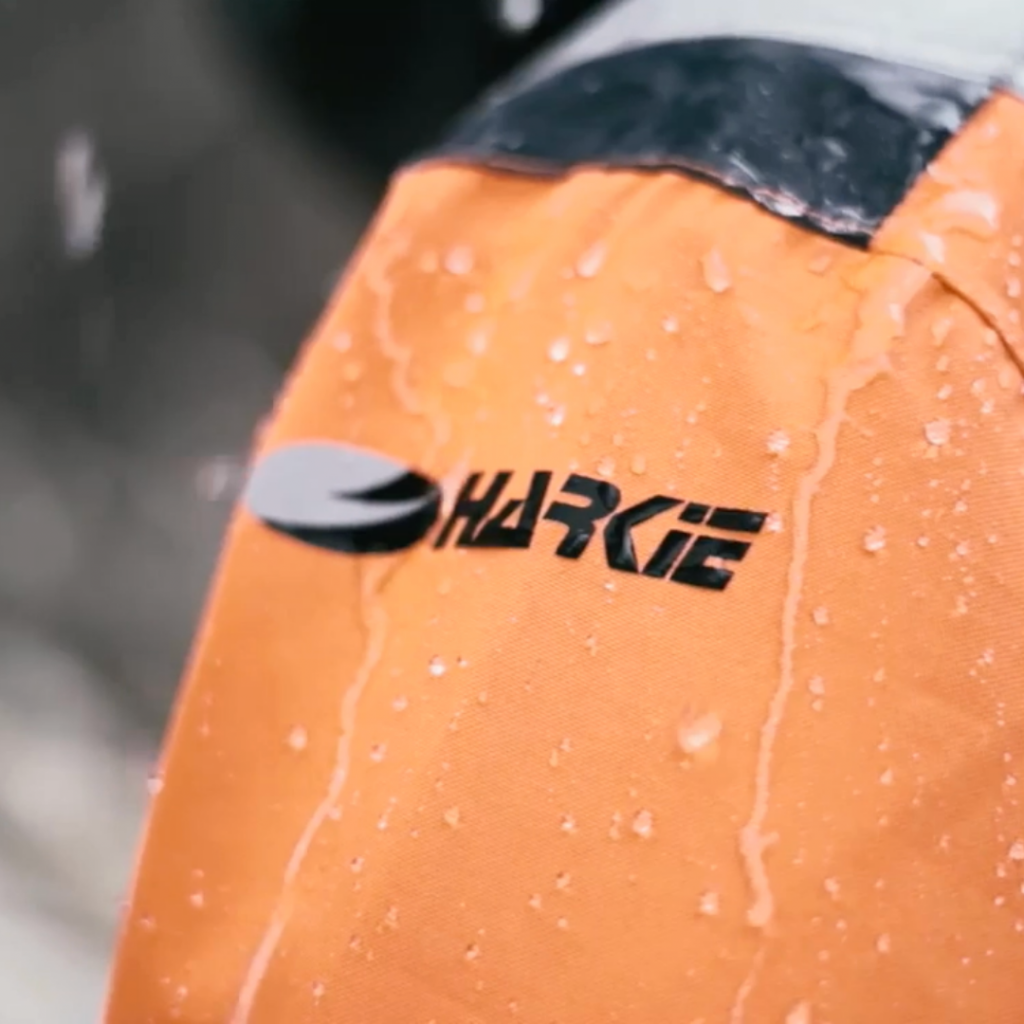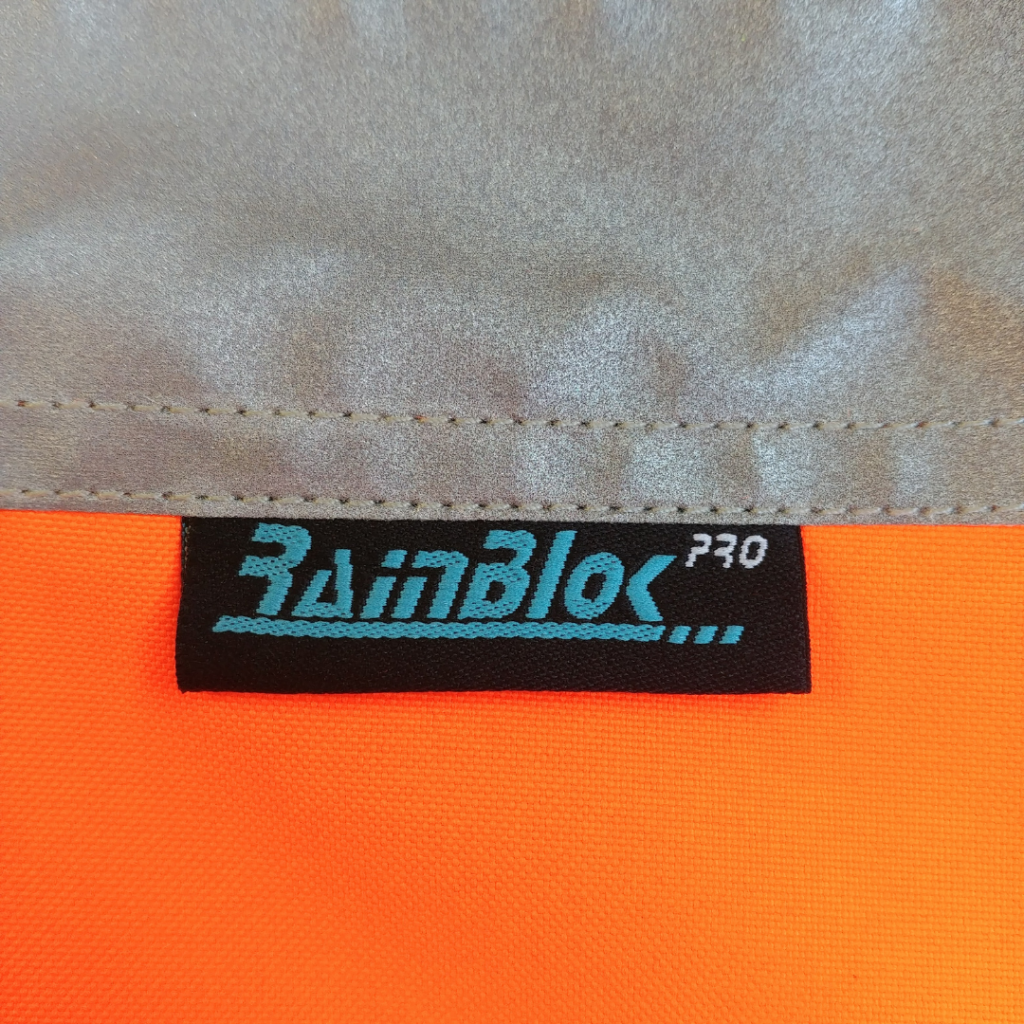
‘The Wetter the Better – when you’re dressed right’
Every tree surgeon will testify to the essentiality of a jacket or smock that keeps them dry and comfortable during the wet seasons. But what does waterproof really mean? And how waterproof is “waterproof”?
The literal definition of ‘waterproof’ means impervious to water. This would apply to materials such as rubber or plastic – which, of course, whilst being ultimately waterproof have no breathability. When used to describe fabrics, ‘waterproof’ does not strictly convey ‘proof’ but rather is a measure of a fabric’s ability to resist water.
For a garment to be certified as waterproof it must meet European standard ISO EN 343, which dictates a minimum level of water resistance, and taped seams. A garment that conforms to the minimum standard required to pass ISO EN 343 would be expected to withstand light rain without allowing water penetration.
Other garments, however, are designed to offer higher performance and will remain waterproof under far more demanding conditions.
Hence, the term waterproof is relative, not absolute, and additional numbers are shown after the EN 343 to help differentiate between the variations in waterproofness of different garments. The same also applies to breathability. We hope that this blog assists you in learning more about the technology behind waterproof garments.

What is ISO EN 343?
ISO EN 343is a European standard for protective clothing that gives a minimum level of protection against wet weather, with the whole garment construction taken into consideration, including the type of fabric used.
Items are judged on two categories; the first (a) judges its ability to protect against precipitation, fog and humidity, while the second (b) measures breathability in those particular conditions. They are subsequently rated from one to four in these two categories, with four representing the highest level of protection and one the lowest. See below for a description of the different classes within each category:
- Water Penetration Resistance
1 – Minimum level of rain protection
2 – Intermediate rain protection
3 – High level of rain protection
4 – Very high level of rain protection
- Breathability
1 – Not classed as breathable under ISO EN 343
2 – Intermediate level of breathability
3 – High level of breathability
4 – Very high level of breathability
This rating is included on the CE label inside the garment, where the ISO EN 343 mark will be followed by two numbers. For example, an ISO EN 343 Class 4:4 label signifies the highest level of waterproofness and breathability. ISO EN 343 Class 2:1 would signify intermediate rain protection but no breathability.
Breathability is tested in accordance with ISO EN 11092. A skin model is used to replicate human skin and measures water vapour resistance, which is demonstrated as a RET number (Resistance of Evaporation of a Textile). The lower the RET rating, the greater breathability, and, therefore, the higher the item will score overall under ISO EN 343.

How is ‘waterproofness’ measured?
The Hydrostatic Head Test
The ‘Waterproofness’ of a garment is laboratory tested to check whether it meets the British Standard. Waterproof ratings are measured in millimetres using a ‘Hydrostatic Head test’. During a Hydrostatic Head test, the fabric is pulled tight under a sealed tube of water, whilst increasing pressure is applied. The level at which water starts to permeate into the fabric is called the hydrostatic head, and is measured in mm. A garment must withstand a minimum hydrostatic head of around 5000mm to be granted ISO EN 343 class 1, the lowest acceptable rating.
The higher the rating the more waterproof a garment is. If an item of clothing is 5,000mm waterproof this indicates that the fabric can withstand 5,000mm of water before it will start to penetrate through.
How do these ratings translate into everyday performance?
Below are some typical ratings used for the measurement of a garment’s ‘waterproofness’. This is only intended as a rough guide, as there are other factors to bear in mind.
Rating 5000mm+
Minimum level of rain protection
Rating 10,000mm – 15,000mm
Intermediate rain protection
Rating 16000mm – 20,000mm
Remains waterproof even under high pressure or over prolonged periods of time.
Rating 20,000mm plus
Extremely high level of water protection over very long periods of time.
Bringing extreme waterproofness and breathability to the outdoor worker…
It can be argued that a garment’s ability to allow perspiration to escape is as paramount as not allowing water in, especially for an active role such as tree surgery! If a waterproof jacket is not breathable, sweat will be unable to escape, making the user feel damp. People often assume that the waterproof isn’t working when in fact it’s perspiration from inside the jacket that they can feel.

Bringing extreme waterproofness and breathability to the outdoor worker…
It can be argued that a garment’s ability to allow perspiration to escape is as paramount as not allowing water in, especially for an active role such as tree surgery! If a waterproof jacket is not breathable, sweat will be unable to escape, making the user feel damp. People often assume that the waterproof isn’t working when in fact it’s perspiration from inside the jacket that they can feel.
Below is a table showing some of the waterproof jackets and smocks that we currently have in stock, along with their waterproof rating.
| Smock/Jacket | W/proof Rating 1 | Rating 2 | Rating 3 | Rating 4 |
| Arbortec Breathedry | *** | |||
| Delta Moonlight | *** | |||
| Solidur Forest | *** | |||
| Fortress Tempest | * | |||
| Harkie Innovation 2 | **** | |||
| Harkie Forestry 2 | **** |
